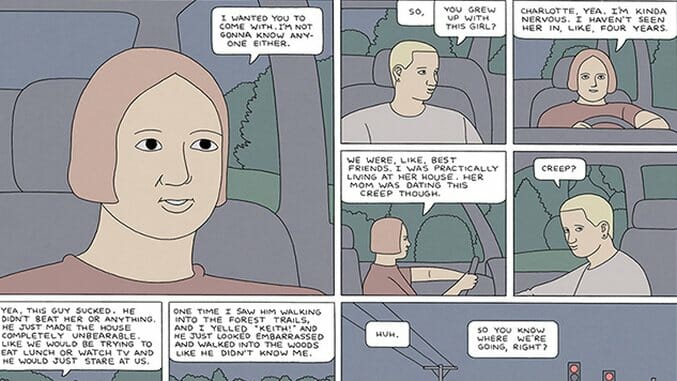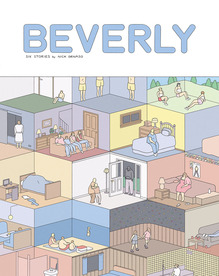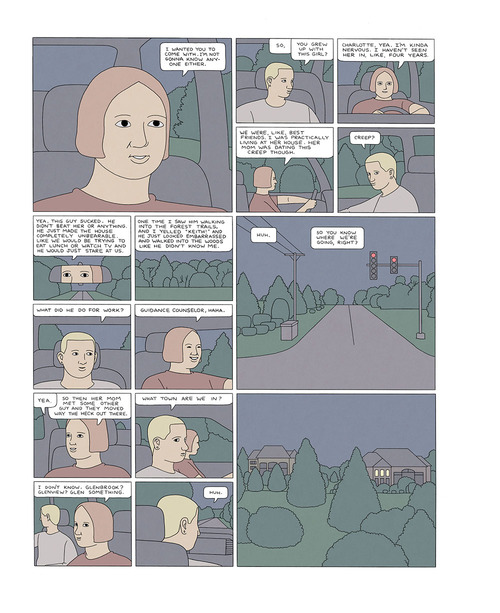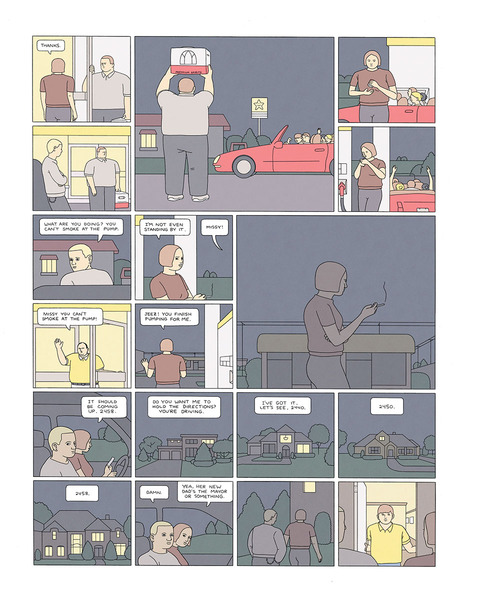Beverly by Nick Drnaso Review

Writer/Artist: Nick Drnaso
Publisher: Drawn & Quarterly
Release Date: January 26, 2016
As you look at the cover of Nick Drnaso’s Beverly, you’ll probably hear Malvina Reynolds’ song “Little Boxes” playing in your head. Used as the intro music to Showtime’s Weeds, the track’s lyrics address the same kind of exhausted suburban environment Drnaso tackles in his graphic novel: “There’s a green one and a pink one/And a blue one and a yellow one/And they’re all made out of ticky tacky/And they all look just the same.” Set some time ago (the ‘90s? AOL Messenger and video games are plot points, but no one seems to have a cell phone) in a midwestern suburb, the book is constructed as a short-story cycle of interlocking narratives. Beverly’s people are sad, soft and kind of lumpy. They spend a lot of time sitting, sinking into their equally sad, soft, kind of lumpy furniture, kind of like the human characters in Wall-E.
-

-

-

-

-

-

-

-

-

-

-

-

-

-

-

-

-

-

-

-

-

-

-

-

-

-

-

-

-

-

-

-

-

-

-

-

-

-

-

-












































